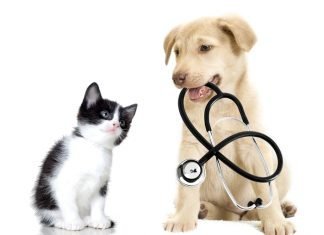Iffat Kawsar, DVM, MS
683 POSTS
0 COMMENTS
I am a veterinary postgraduate from a reputed Agricultural University in Bangladesh. I have more than 700 articles and publications on veterinary subjects. I am an animal lover and want to share my knowledge on dogs, cats, birds, horses, and farm animals. I am also experienced with thesis writing, book reviews, content writing, and research paper optimization. I am doing PhD at Bangladesh Agricultural University and an Research Officer at the Ministry of Education of the Government of Bangladesh. I feel free to share my experience and views with you. You can send your comments and write up to my email: [email protected] or [email protected]
Westphalian Horse: A Historic Horse Breed of Germany
The Westphalian horse, also known as the Westfalen, is a German warmblood breed known for its versatility, particularly in dressage and show jumping. It is a well-regarded breed in the equestrian world, known for...
10 Benefits of Duck Rearing in Homestead
Duck rearing is a widespread agricultural practice for various reasons, including economic, environmental, and social benefits. These factors make duck rearing an attractive and sustainable farming practice with diverse benefits for farmers, consumers, and...
Azteca Horse: The Most Versatile Mexican Horse
The Azteca horse is a relatively new and versatile breed that originated in Mexico. The Azteca horse is a blend of Andalusian, Quarter Horse, and Criollo breeds, designed to combine the best qualities of...
10 Most Common Pet Animals: You Can Choose As Companion
A pet is a domesticated animal kept for companionship or pleasure rather than utility or economic reasons. Pets are usually known for their loyal and affectionate nature, and they often become integral parts of...
Down Syndrome in Dogs: Causes, Diseases, Signs, Treatment
Down syndrome in dogs does not have a direct equivalent in humans. However, dogs can exhibit symptoms and congenital disabilities that resemble some aspects of Down syndrome in humans. Chromosomal abnormalities in dogs can...
Feline Scabies: Causes, Signs, Diagnosis, and Treatment
Feline scabies, or notoedric mange, is a highly contagious skin disease caused by the mite Notoedres cati. This parasitic mite burrows into the skin of cats, causing intense itching, inflammation, and a characteristic crusty...
Bladder Cancer in Dogs: Causes, Signs, Diagnosis and Treatment
Bladder cancer in dogs, specifically referred to as transitional cell carcinoma (TCC), is a malignant tumor that originates in the lining of the bladder. This type of cancer is relatively uncommon but severe and...
Haylage For Horses: Everything You Need To Know As Owner
What is Haylage for Horses?
Haylage is a type of forage made from grass cut, wilted, and then fermented under anaerobic conditions. It is used as a feed for horses and offers several benefits compared...
Calculating Horse Weight: 4 Methods of Weight Measurement
Horse weight refers to the body mass of the horse, typically measured in kilograms or pounds. Calculating horse weight encompasses the entire body of the horse, including bones, muscles, organs, fat, and fluids. Understanding...
3 Common Types of Dog Head For Easy Identification
Identifying a dog by its head involves looking at several key features, including the shape of the head, the size and shape of the ears, the eyes, the muzzle, and the overall expression. Here...









